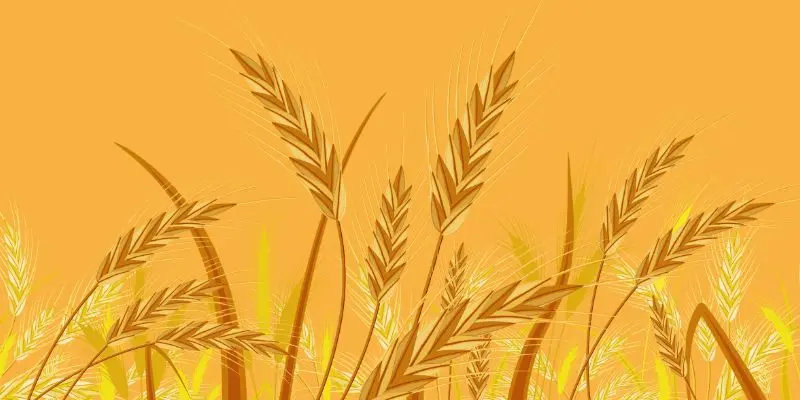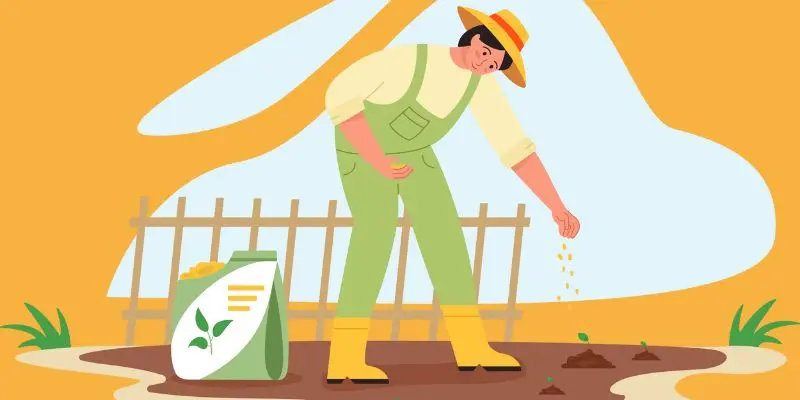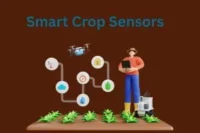How to Grow Wheat in Small Fields: A Step-by-Step Guide for Beginners
Published: 5 May 2025
I always thought wheat was something only big farms could grow—huge machines, endless fields, and complicated methods I’d never understand. Could someone with just a small plot of land really grow their own wheat? I wasn’t sure where to start or even if it was worth trying. But the more I looked into it, the more I realized that growing wheat in a small field is not only possible—it’s surprisingly simple, deeply satisfying, and incredibly empowering. This step-by-step guide is for beginners like me who once felt unsure but are ready to give it a try
.So, guys, without wasting time, let’s jump into the article to learn How to Grow Wheat in Small Fields: A Step-by-Step Guide for Beginners
1.Why Grow Wheat in Small Fields?
- Explain the growing interest in home-scale and small-field wheat farming.
- Mention benefits: food independence, organic grain, and learning sustainable practices.
- Highlight its feasibility, even on a quarter-acre plot or less.
- SEO Keywords: grow wheat in small fields, wheat cultivation for beginners, backyard grain farming.

2. Understanding the Basics of Wheat Cultivation
- Wheat is a cool-season crop best grown in mild climates.
- Grows well in loamy or clay-loam soils with good drainage.
- Average growing time: 4 to 6 months, depending on the variety.
- Wheat types: Hard red wheat, soft white wheat, durum, etc.
3. Choosing the Right Wheat Variety
- Choose based on climate and intended use (bread, pasta, etc.).
- Examples:
- Hard Red Winter Wheat – ideal for bread, cold climates.
- Soft White Wheat – good for pastries, grown in milder zones.
- Use certified, disease-free seed for better germination and yield.
4. Preparing the Small Field or Plot
- Clear the land of weeds and old roots.
- Till or double-dig the soil 6–8 inches deep to improve aeration.
- Add compost or aged manure for organic enrichment.
- Maintain soil pH between 6.0 and 7.5.
5. Sowing Wheat Seeds
- Best time to sow:
- Winter wheat: fall (before first frost).
- Spring wheat: early spring (as soon as soil is workable).
- Broadcast seeds evenly or use row planting (6–8 inches apart).
- Sow seeds about 1–1.5 inches deep and lightly rake in soil.
6. Watering Needs
- Wheat needs moderate water—avoid overwatering.
- Provide 1–1.5 inches of water per week, especially during tillering and grain filling stages.
- Drip irrigation or controlled flooding can be used in small fields.
7. Fertilization and Soil Care
- Organic options: compost tea, bone meal, or fish emulsion.
- Apply nitrogen-rich fertilizer during early growth.
- Avoid excessive fertilization to prevent lodging (falling over).

8. Weed and Pest Management
- Keep field weed-free during early stages of growth.
- Use mulching or shallow hoeing to suppress weeds.
- Natural pest control:
- Neem oil for aphids.
- Crop rotation to prevent disease build-up.
- Encourage beneficial insects like ladybugs.
9. Growth Stages to Monitor
- Germination → Tillering → Stem elongation → Flowering → Grain filling → Maturity.
- Monitor for yellowing leaves, pests, or signs of disease.
- Light irrigation during grain filling boosts yield.
10. Harvesting Wheat in Small Fields
- Harvest when grain heads turn golden and stalks are dry.
- Test readiness: Bite test (grain should be hard) or moisture meter (below 14%).
- Use a sickle or hand scythe for small plots.
- Bundle and dry sheaves for 1–2 weeks before threshing.
11. Threshing and Cleaning Wheat
- Manual methods: beating sheaves over a barrel or stomping on a tarp.
- Winnowing: Toss grain in a light breeze or use a fan to separate chaff.
- Store clean wheat in airtight containers in a cool, dry place.
12. Saving Seeds for Next Season
- Choose healthiest heads from disease-free plants.
- Dry seeds fully and store in a moisture-proof container.
- Label with date and variety for next planting season.
13. Common Mistakes to Avoid
- Planting too deep or too late in the season.
- Overwatering, especially in early stages.
- Ignoring weed growth or pest signs.
- Skipping soil testing and fertilization.
References
This guide is informed by agricultural research from the Food and Agriculture Organization (FAO) and small-scale farming practices shared by experienced homesteaders.
Author Name
Hiroshi oyaizu
Spatial Variability Patterns of Wheat Growth and Soil Properties in a Small Field as Affected by Tillage Intensity
Journal Article

- Be Respectful
- Stay Relevant
- Stay Positive
- True Feedback
- Encourage Discussion
- Avoid Spamming
- No Fake News
- Don't Copy-Paste
- No Personal Attacks

- Be Respectful
- Stay Relevant
- Stay Positive
- True Feedback
- Encourage Discussion
- Avoid Spamming
- No Fake News
- Don't Copy-Paste
- No Personal Attacks





